Hi Yaser and all,
Here’s a common motif
in a serrated diamond lattice on a Kurdish rug I recently
acquired:

A variation on this
motif, with the orientation of the central square rotated into a diamond,
is familiar as well, from the elems of some Kurdish bags:
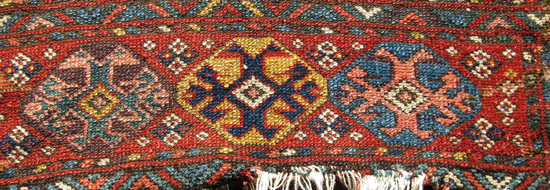
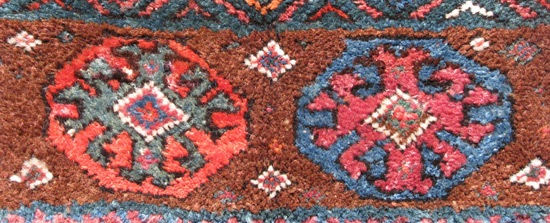
It can be found in
Shahsavan pieces and also frequently appears as the sumakh field pattern
of Bakhtiari mixed technique saddle bags, such as this one:
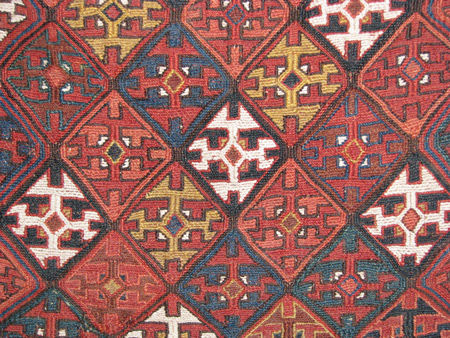
And also
occasionally on Qashqa’i pile bags:

In the Kurdish version, it
might be seen as a variation of a design that has sometimes been
designated as a ‘shikak cross’?
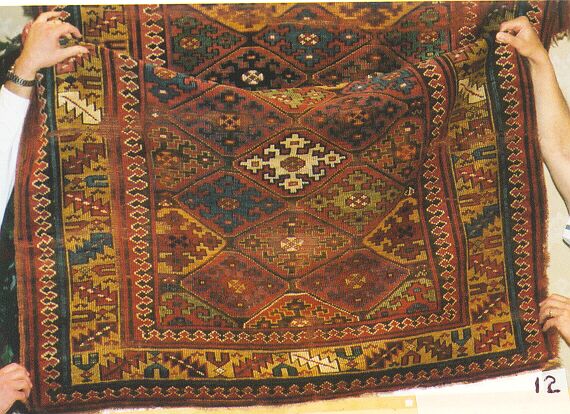
or as a type of palmette, as
was discussed in this 2002 Turkotek discussion (
http://www.turkotek.com/salon_00088/s88t3.htm). In
Antique Rugs of Kurdistan (p.161), Burns refers to the serrated
edged diamonds in the field in A1 as
ashlik:
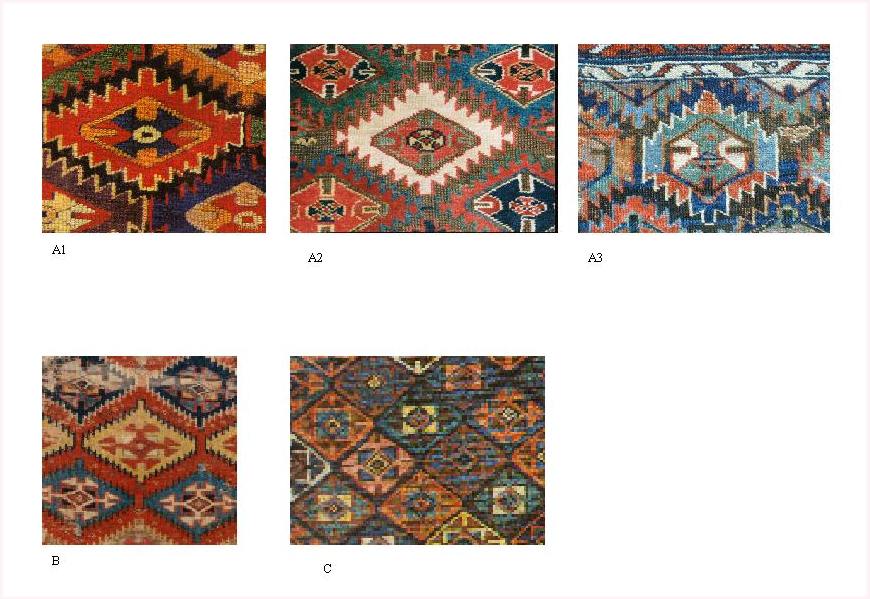
However, it
also has a marked similarity to the ‘gulbudak’ seen on Anatolian kilims,
like this Reyhanli.
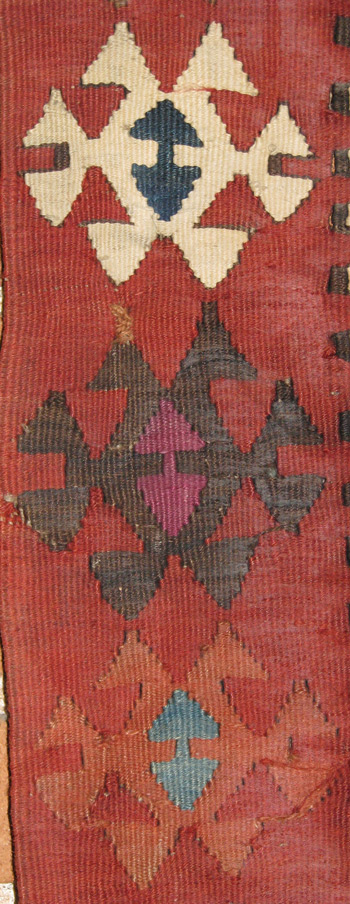
In keeping with the salon’s
call to take strides towards a useful but pluralistic standardization of
terminology, how should we refer to this motif? Would a phrase that
attempted to be purely descriptive of its shape and features be best, in
order to avoid committing, even implicitly, to any particular
understanding of the design’s evolution? (For example, we might describe
this motif as the juxtaposition of a cross-moline and a cross-quadrant,
with variations of the orientation of the square.)
Should we
research the local terms used by the groups who have made use of each
variation and attempt to incorporate those in our descriptions? Is there a
tension between the desire for standardization and the call for pluralism
and “the responsibility of adopting more vocabulary from the local
languages of the weaving nations"?
And, by the way, does anyone
know any term(s) for this motif?
Joel Greifinger